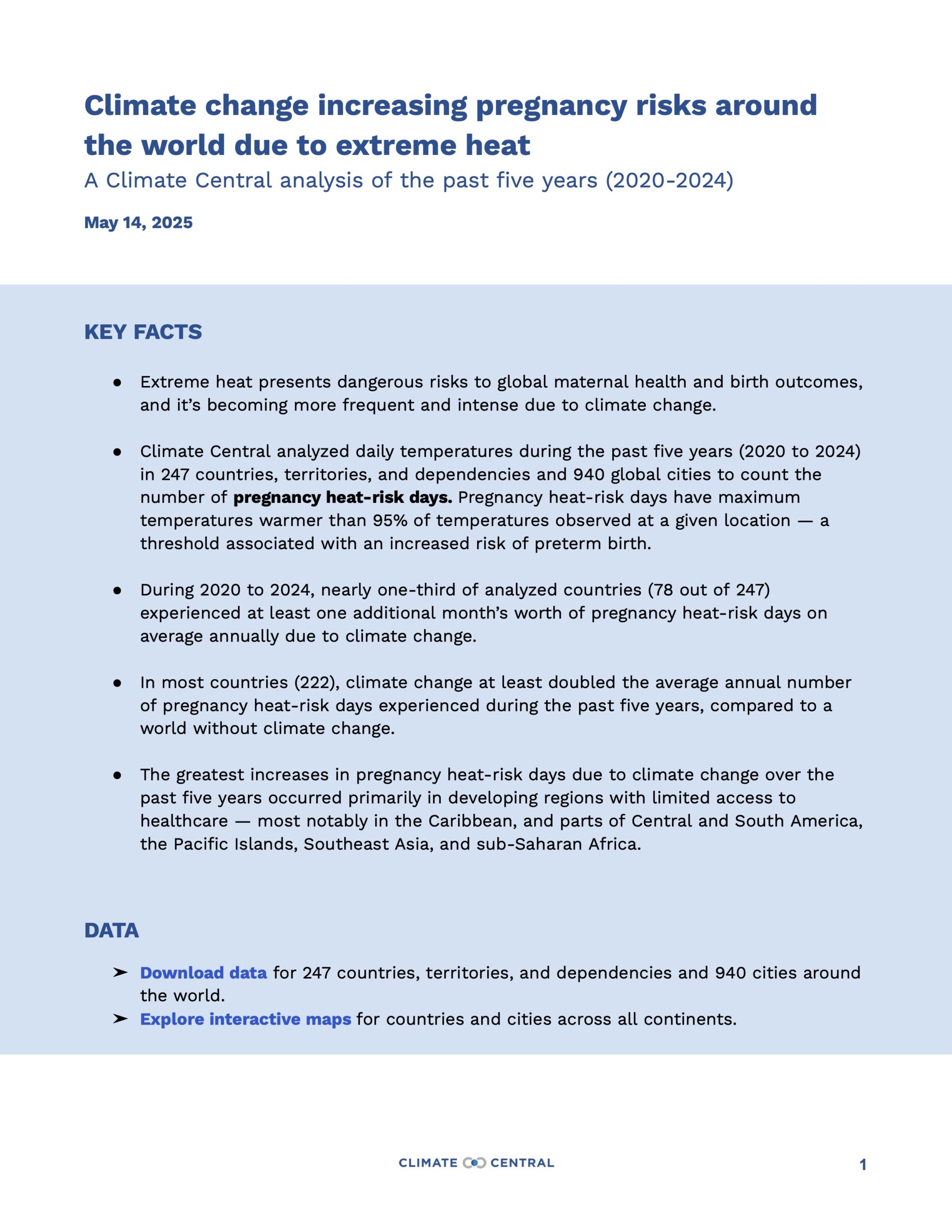Climate change increasing pregnancy risks around the world due to extreme heat – A Climate Central analysis of the past five years (2020-2024)
Organization: Climate Central
Year: 2025

Key Facts
- Extreme heat presents dangerous risks to global maternal health and birth outcomes, and it’s becoming more frequent and intense due to climate change.
- Climate Central analyzed daily temperatures during the past five years (2020 to 2024) in 247 countries, territories, and dependencies and 940 global cities to count the number of pregnancy heat-risk days. Pregnancy heat-risk days have maximum temperatures warmer than 95% of temperatures observed at a given location — a threshold associated with an increased risk of preterm birth.
- During 2020 to 2024, nearly one-third of analyzed countries (78 out of 247) experienced at least one additional month’s worth of pregnancy heat-risk days on average annually due to climate change.
In most countries (222), climate change at least doubled the average annual number of pregnancy heat-risk days experienced during the past five years, compared to a world without climate change. - The greatest increases in pregnancy heat-risk days due to climate change over the past five years occurred primarily in developing regions with limited access to healthcare — most notably in the Caribbean, and parts of Central and South America, the Pacific Islands, Southeast Asia, and sub-Saharan Africa.